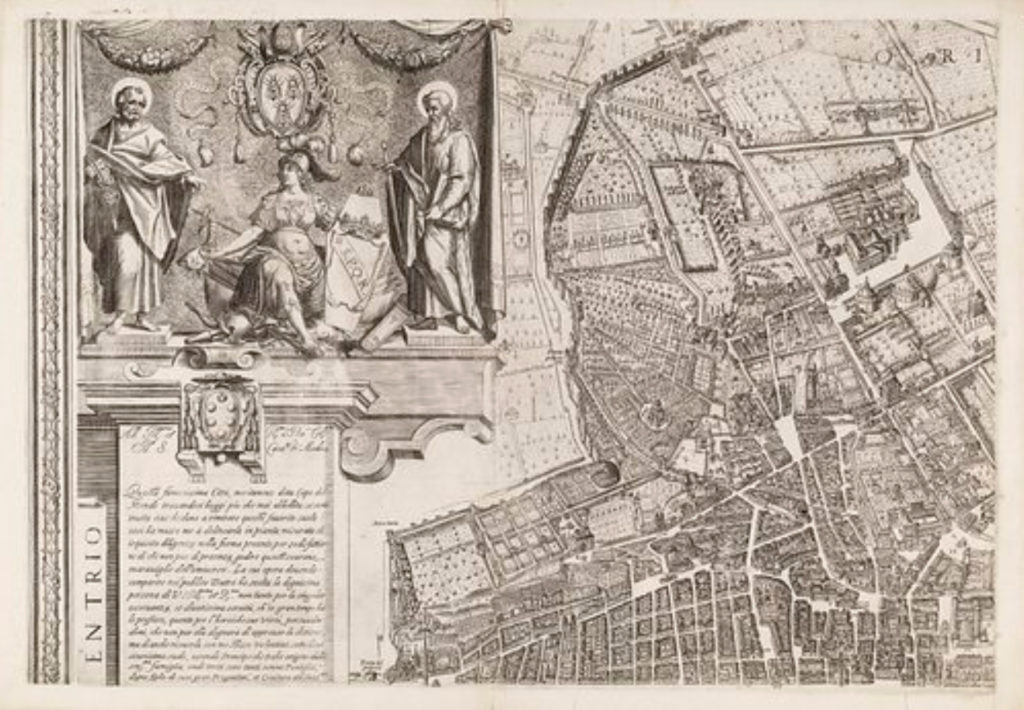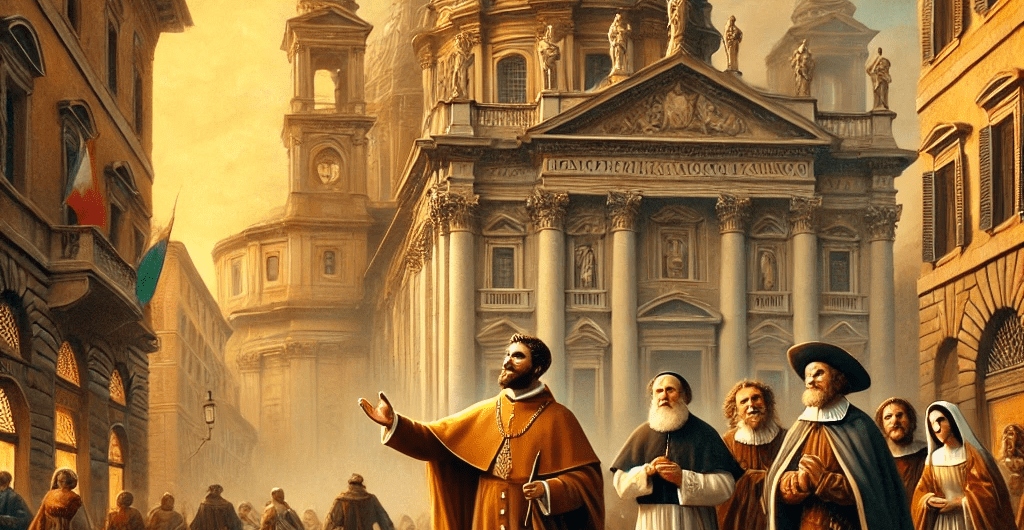Rome, often called the Eternal City, has long been a destination for Christian pilgrims seeking spiritual renewal and a connection to the faith’s earliest roots. One of the most historically significant pilgrimage traditions in Rome is the 7 Pilgrim Churches route, popularized in the 16th century by St. Philip Neri. This sacred journey involves visiting seven of the city’s most important churches, each holding deep religious and historical significance.
In this article, we’ll explore the origins of the 7 Pilgrim Churches of Rome pilgrimage, the life of St. Philip Neri, the churches included in the tradition, and how the practice has evolved in modern times.
The Origins of the 7 Pilgrim Churches of Rome Pilgrimage
Pilgrimage has been an essential part of Christian spirituality for centuries, with Rome being a prime destination due to its status as the heart of the Catholic Church and the burial site of many apostles and saints. The 7 Pilgrim Churches of Rome pilgrimage traces its origins to the early Christian practice of visiting the city’s 4 major basilicas, especially during the Jubilee Years established by Pope Boniface VIII in 1300.
By the 16th century, pilgrimage had become more structured, and it was St. Philip Neri who revitalized and popularized the devotion as a way to deepen faith, foster community, and encourage spiritual renewal.
The Life and Mission of St. Philip Neri
A Saint of Joy and Devotion
St. Philip Neri (1515-1595) was an Italian priest known for his deep spirituality, joyful personality, and commitment to serving the poor. Born in Florence, he moved to Rome in 1533, where he dedicated himself to prayer, study, and works of charity.
His charismatic nature and ability to connect with people earned him the nickname “Apostle of Rome”. He founded the Congregation of the Oratory (commonly known as the Oratorians), a community of priests who emphasized prayer, preaching, and pastoral care.
Reviving Pilgrimage in Rome
During the 1550s, Rome was experiencing a spiritual decline following the chaos of the revolutionary movement of the heretic Martin Luther, and St. Philip Neri sought ways to rekindle devotion among the faithful. He encouraged people to participate in acts of charity, prayer, and communal worship. One of his most successful initiatives was organizing groups to visit the seven most important churches in Rome as a penitential pilgrimage.
This journey was not just a solitary act of piety but a joyful communal experience, filled with prayers, hymns, and fellowship, making it an accessible and engaging way for people to deepen their faith.
The 7 Pilgrim Churches of Rome: A Sacred Journey
The 7 Pilgrim Churches are a mix of ancient basilicas and historically significant sites that highlight key aspects of Christian history and devotion. Here is an overview of the churches involved in this traditional pilgrimage:

1. St. Peter’s Basilica (Basilica di San Pietro in Vaticano)
As the heart of the Catholic Church, St. Peter’s Basilica is the first stop on the pilgrimage. Built over the tomb of St. Peter, the basilica is a masterpiece of Renaissance architecture, with Michelangelo’s famous dome and Bernini’s breathtaking colonnade & baldachino.
- Significance: The seat of the Pope and one of the holiest sites in Christianity.
- Key Features: St. Peter’s tomb, Michelangelo’s Pieta , Bernini’s Baldachino.
2. St. Paul Outside the Walls (Basilica di San Paolo fuori le Mura)
This basilica houses the tomb of St. Paul, the ‘Apostle to the Gentiles‘. It is the second-largest church in Rome and features magnificent mosaics and a striking cloister.
- Significance: Honors St. Paul, who was martyred in Rome.
- Key Features: St. Paul’s tomb, the stunning apse mosaic, and the massive 19th-century reconstruction after a fire.
3. St. John Lateran (Basilica di San Giovanni in Laterano)
The Cathedral of Rome, St. John Lateran is the official seat of the Pope and the oldest basilica in the city of Rome.
- Significance: The mother church of all Catholic churches worldwide.
- Key Features: The Papal throne, giant statues of the apostles, and the Scala Sancta (Holy Stairs) nearby.
4. St. Mary Major (Basilica di Santa Maria Maggiore)
Dedicated to the Blessed Ever-Virgin Mary, this basilica is famous for its stunning mosaics and its celebration of defining Mary’s title as Mother of God in the 5th Century.
- Significance: One of the oldest Marian churches in the world.
- Key Features: The relic of the Holy Crib, exquisite Byzantine mosaics, and Bernini’s tomb.
5. St. Lawrence Outside the Walls (San Lorenzo fuori le Mura)
This lesser-known basilica is dedicated to St. Lawrence, one of the first Christian martyrs. It is also the burial site of Pope St. Pius IX, and the protomartyr, St Stephen.
- Significance: A tribute to one of the early Christian deacons and martyrs.
- Key Features: The tomb of St. Lawrence, beautiful 6th-century mosaics, and ancient catacombs.
6. Holy Cross in Jerusalem (Santa Croce in Gerusalemme)
This church was built to house relics of Christ’s Passion, brought to Rome by St. Helena, the mother of Emperor Constantine.
- Significance: Contains relics of the True Cross.
- Key Features: Fragments of the True Cross, a nail from the Crucifixion, and part of the Titulus Crucis (the inscription from Jesus’ cross). To experience these more fully, then book on our magnificent Via Crucis Tour.
7. St. Sebastian Outside the Walls (San Sebastiano fuori le Mura)
Originally part of the early Christian catacomb pilgrimage, this basilica is dedicated to St. Sebastian, a Roman soldier martyred for his faith.
- Significance: Home to the Catacombs of St. Sebastian.
- Key Features: The tomb of St. Sebastian, ancient catacombs, and a relic of the footprint of Christ.
The Popularity and Evolution of the Pilgrimage
During the 16th and 17th centuries, the 7 Pilgrim Churches of Rome pilgrimage became a key spiritual practice, especially during Jubilee Years, when the Pope granted special indulgences to those who completed the journey. St. Philip Neri’s joyful and communal approach to pilgrimage helped revive Rome’s spiritual life, attracting both clergy and laypeople.
Modern Adaptations of the 7 Pilgrim Churches Tradition
While the original pilgrimage route remains intact, modern adaptations have emerged:
1. Youth and Group Pilgrimages – Schools, religious communities, and Catholic youth groups continue to organize pilgrimages following St. Philip Neri’s model.
2. Jubilee Year Pilgrimages – During Holy Years, millions of pilgrims follow the traditional route to receive the special indulgence.
3. Alternative 7-Church Routes – Some variations include churches that played significant roles in modern Catholic history. For example, Pope John Paul II suggested adding Our Lady of Divine Love Sanctuary, replacing St. Sebastian’s Basilica.
4. Self-Guided Pilgrimages – With digital resources, pilgrims now embark on self-guided tours, using apps and maps to follow the route at their own pace. However we offer tours of each of the 7 Pilgrim Churches to allow you to participate in this historic pilgrimage yourself.
Conclusion: A Legacy of Faith and Renewal
The 7 Pilgrim Churches of Rome pilgrimage remains one of the most spiritually enriching traditions in Christian history. First revived by St. Philip Neri, this pilgrimage not only deepens faith but also provides a profound connection to the history of the Church.
Whether completed in a single day as St. Philip Neri intended, or spread over several days, this sacred journey continues to inspire pilgrims worldwide, making it an enduring testament to the power of faith, history, and communal devotion in the heart of Rome.


